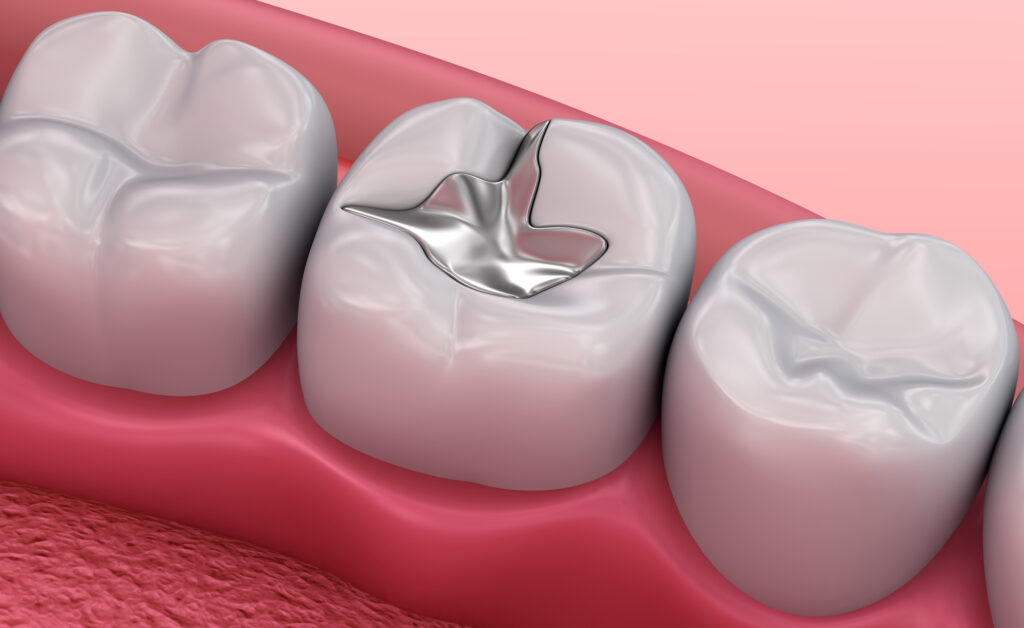
Welcome to our blog post on understanding dental filling procedures! If you have been experiencing tooth decay or damage, finding the right dentist and exploring modern techniques for tooth restoration, like dental fillings, is crucial. Dental fillings are a common solution to restore teeth affected by cavities and cracks. In this article, we will delve into what dental fillings are, the different types available, their pros and cons, as well as what you can expect during the procedure. So let’s dive in and discover how dental fillings can help bring back your radiant smile!
What is a Dental Filling?
A dental filling is a restorative procedure used to repair teeth that have been affected by decay or damage. When tooth decay occurs, it creates small holes called cavities in the tooth enamel. These cavities can gradually grow larger and deeper if left untreated, leading to pain, sensitivity, and further deterioration of the tooth structure.
Dental fillings are designed to remove the decayed portion of the tooth and fill the resulting space with a durable material. This helps restore both the function and appearance of the affected tooth. By filling in these cavities, dental fillings prevent further decay from spreading and protect the inner layers of the tooth from infection.
There are several types of dental fillings available today. The most common ones include amalgam (silver) fillings, composite resin (tooth-colored) fillings, ceramic (porcelain) fillings, and glass ionomer cement fillings. Each type has its own set of advantages and considerations based on factors such as durability, aesthetics, cost-effectiveness, and location within your mouth.
To determine which type of filling is best for you, it’s important to consult with your dentist who will assess your specific needs and recommend an appropriate option for optimal results. Remember that finding an experienced dentist who specializes in dental restorations is key to ensuring successful outcomes for your treatment.
Overall, dental fillings play a crucial role in restoring damaged teeth caused by decay or trauma.
These procedures not only help alleviate discomfort but also preserve natural teeth structure while enhancing your smile’s overall aesthetics. With the modern age, most of the dentist use modern techniques for tooth restoration like dental fillings to restore smile.
So, reaching out to a skilled dentist who can offer personalized solutions tailored to your unique needs is essential!
The Different Types of Dental Fillings
When it comes to dental fillings, there are several different types available. Each type has its own unique characteristics and benefits. Let’s take a closer look at some of the most common types of dental fillings:
1. Amalgam Fillings: These are made from a mixture of metals, including silver, tin, copper, and mercury. Amalgam fillings have been used for many years and are known for their durability.
2. Composite Fillings: Made from a mixture of plastic and glass materials, composite fillings can be matched to the color of your natural teeth, making them virtually invisible.
3. Ceramic Fillings: Also known as porcelain or inlay/onlay restorations, ceramic fillings provide excellent aesthetics as they can be customized to match the shade of your tooth enamel.
4. Gold Fillings: Considered one of the most durable options, gold fillings are long-lasting but tend to be more expensive than other alternatives.
5. Glass Ionomer Fillings: These are made from a blend of acrylic acids and fine glass powders and release fluoride over time to help prevent further decay.
It’s important to note that each type of dental filling has its own set of pros and cons based on factors such as appearance, durability, cost-effectiveness, and suitability for specific areas in the mouth.
Pros and Cons of Dental Fillings
Dental fillings play a crucial role in restoring the health and functionality of teeth that have been damaged by cavities or decay. While dental fillings are a common and effective treatment option, it is important to consider both the pros and cons before undergoing the procedure.
One of the major advantages of dental fillings is their ability to preserve natural tooth structure. Unlike other restorative treatments like crowns or implants, dental fillings require minimal removal of healthy tooth tissue. This means that your natural tooth can be preserved while still addressing the issue at hand.
Another benefit is that dental fillings are generally more affordable than alternative treatments. They provide a cost-effective solution for repairing minor to moderate tooth damage without breaking the bank.
However, there are also some drawbacks to consider when it comes to dental fillings. One potential con is that they may not be as durable as other restoration options like crowns or veneers. Depending on factors such as oral hygiene habits and bite force, a filling may need replacement after several years.
Additionally, some patients may experience sensitivity following a dental filling procedure. This sensitivity typically resolves within a few weeks but can cause temporary discomfort in certain cases.
While dental fillings offer many benefits such as preserving natural tooth structure and being cost-effective, they also come with considerations such as potential durability issues and post-procedure sensitivity. It’s essential to discuss these factors with your dentist before making an informed decision about which type of restoration suits you best
What to Expect During the Dental Filling Procedure?
When it comes to getting a dental filling, knowing what to expect can help ease any anxiety or uncertainty. The dental filling procedure is a relatively straightforward process that aims to restore a tooth damaged by decay or cavities.
Your dentist will begin by administering local anesthesia to numb the area around the affected tooth. This ensures you experience minimal discomfort during the procedure. Once you are numb, your dentist will carefully remove any decayed or damaged parts of the tooth using specialized tools.
Next, your dentist will prepare the remaining healthy tooth structure for the filling material. This involves cleaning and disinfecting the area before applying an adhesive substance to promote bonding with the filling material.
The type of dental filling chosen will then be placed into the prepared cavity and shaped accordingly for optimal function and aesthetics. Your dentist may use composite resin, porcelain, gold alloy, silver amalgam, or other materials depending on your specific needs and preferences.
After placing and shaping the filling material, your dentist will use a curing light (for composite fillings) or other techniques (depending on material used) to harden and set it in place. They will also make any necessary adjustments for proper alignment with neighboring teeth.
Throughout this entire process, your dentist will ensure that you are comfortable at all times while maintaining clear communication regarding sensations or concerns you may have.
Once completed, you can expect some residual sensitivity as your mouth adjusts to having a new restoration in place. This should subside within a few days following treatment.
Undergoing a dental filling procedure is generally painless thanks to modern techniques and anesthetics used by dentists today. It’s important to remember that each individual’s experience may vary slightly based on factors such as tooth location and personal pain tolerance levels.
After the Dental Filling Procedure
Once you have completed your dental filling procedure, it is important to take proper care of your teeth and mouth to ensure a smooth recovery. Here are some tips to follow after getting a dental filling.
1. Avoid eating or drinking anything for at least two hours after the procedure. This will give the filling enough time to set properly.
2. Be mindful of what you eat in the following days. Stick to soft foods that do not require excessive chewing, such as soups, yogurt, and mashed potatoes. Avoid hard and sticky foods that can potentially damage or dislodge the filling.
3. It is normal to experience some sensitivity or discomfort after getting a dental filling. Over-the-counter pain relievers can help alleviate any pain or discomfort you may feel.
4. Maintain good oral hygiene by brushing your teeth twice a day with fluoride toothpaste and flossing daily. This will help prevent any further decay and keep your newly filled tooth clean and healthy.
Conclusion
In today’s modern age, tooth restoration has become more accessible and effective than ever before. Dental fillings have revolutionized the field of dentistry, providing patients with a reliable and long-lasting solution for damaged or decayed teeth.
Whether you opt for amalgam fillings, composite resin fillings, or any other type available, it is crucial on finding the right dentist who can guide you through the process and ensure optimal results. With their expertise and skill, they will help restore your smile and improve your overall oral health.
Remember that dental fillings are just one of many fantastic options in tooth restoration. Advances in technology continue to bring forth new techniques and materials that offer even better outcomes. So if you’re considering tooth restoration or dental fillings in particular, don’t hesitate to explore all the possibilities available to you.
Take control of your oral health today by finding a reputable dentist who specializes in dental restorations like dental fillings. By doing so, you’ll be on your way to enjoying a healthy smile that lasts a lifetime!

